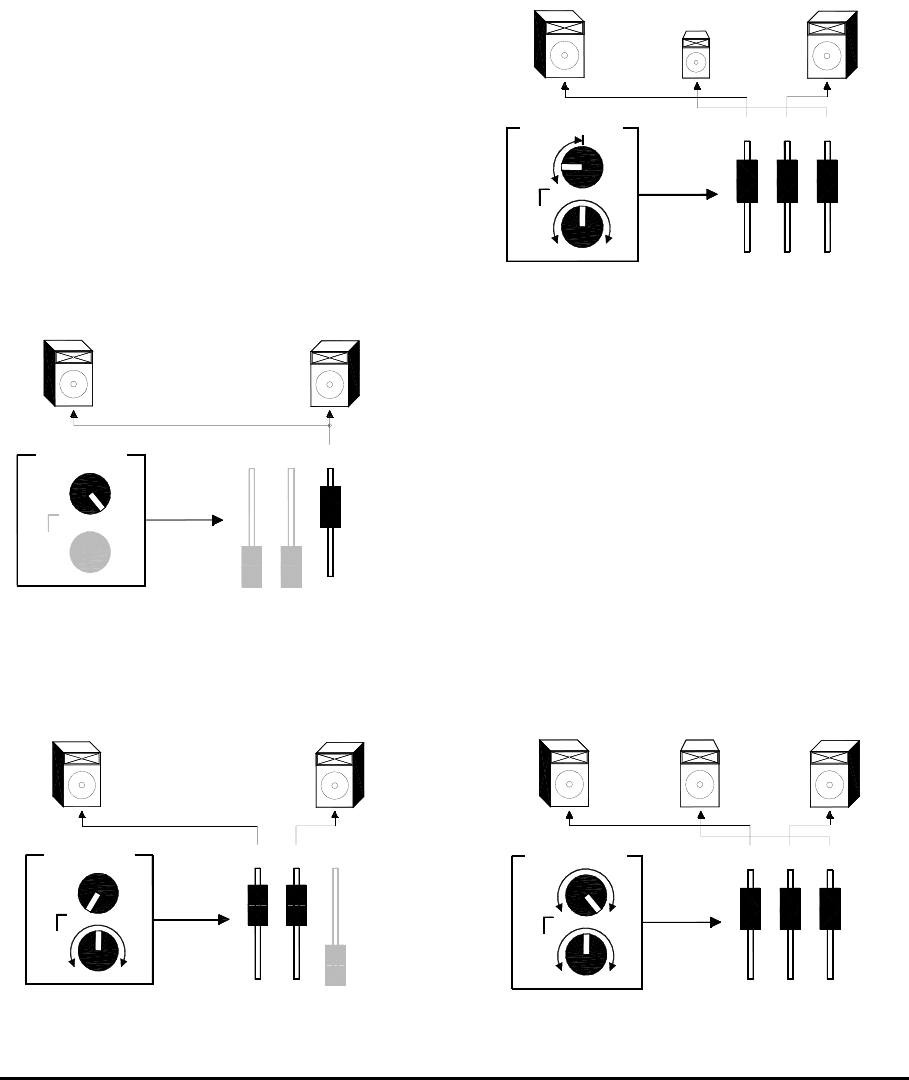Operation Manual

28 ML5000 User Guide
Using LCRplus
The ML5000 LCRplus system extends signal
imaging beyond conventional LR and LCR panning
by allowing full 3 speaker balance and positioning
from each channel and group. This satisfies the
standard requirements of mono, stereo and
conventional LCR speaker systems as well as
providing a unique extended capability.
The MAIN MIX. This comprises 3 outputs: L (left),
R (right) and C (centre). How you use these
depends on the type of sound system you are
running. For example, you may use all for a 3
cluster LCR system, just L and R for a conventional
stereo system, or C only for a mono system.
PAN and BLEND. These are the two imaging
controls that let you position the sound anywhere in
the three output mix. For example, it could be
balanced in all three outputs, somewhere between
any two, or routed to just one. The controls have a
smooth response with 3dB centre attenuation to
ensure that the power is distributed evenly between
the speakers as you move the signal around.
MONO PA. To control a mono sound system using
a single master fader, set BLEND fully clockwise to
route all the channel signal to the C output. The LR
outputs are not used and PAN has no effect.
MONO PA
PAN
BLEND
CLR
RL
LRC
STEREO PA. To control a stereo sound system,
set BLEND fully anticlockwise to route the signal to
LR only. Use PAN to position the sound between
the speakers. The C output is not used.
LRC
STEREO PA
PAN
BLEND
CLR
RL
STEREO + CENTRE FILL. A centre fill speaker is
used to reinforce the sound to the first few rows of
the audience when the L and R speakers are
positioned far apart. Start with BLEND fully
anticlockwise to set up the main LR mix. Then
gradually rotate BLEND clockwise to raise the
signal in the fill speaker as required. It should not
be necessary to adjust beyond the centre position
at which point equal signal is fed to all 3 outputs.
Beyond centre the LR signal would drop
significantly. Having LCRplus available on every
channel and group means that you can choose
which signals are reinforced, for example the back
stage mics rather than the front floats which would
feed back if routed to the fill.
LRC
STEREO+FILL
PAN
BLEND
CLR
RL
LCR PA. LCR systems are increasingly popular in
large installed or touring systems. They comprise
three main speaker stacks, left, centre and right to
provide better coverage of a large audience. In
some situations C is used only for sounds such as
vocals to lift them out of the mix making them more
intelligible, leaving backing instruments in the LR
speakers. In other situations individual sounds are
panned between the speakers according to source
position.
Adjust both BLEND and PAN to position each
sound exactly where you want it whether in one
speaker, between two, or blended across all three.
Use BLEND to balance between the LR and C
speakers. Use PAN to adjust the balance between
the L and R speakers. PAN does not affect the
level of the C output.
LRC
LCR
PAN
BLEND
RL
CLR










